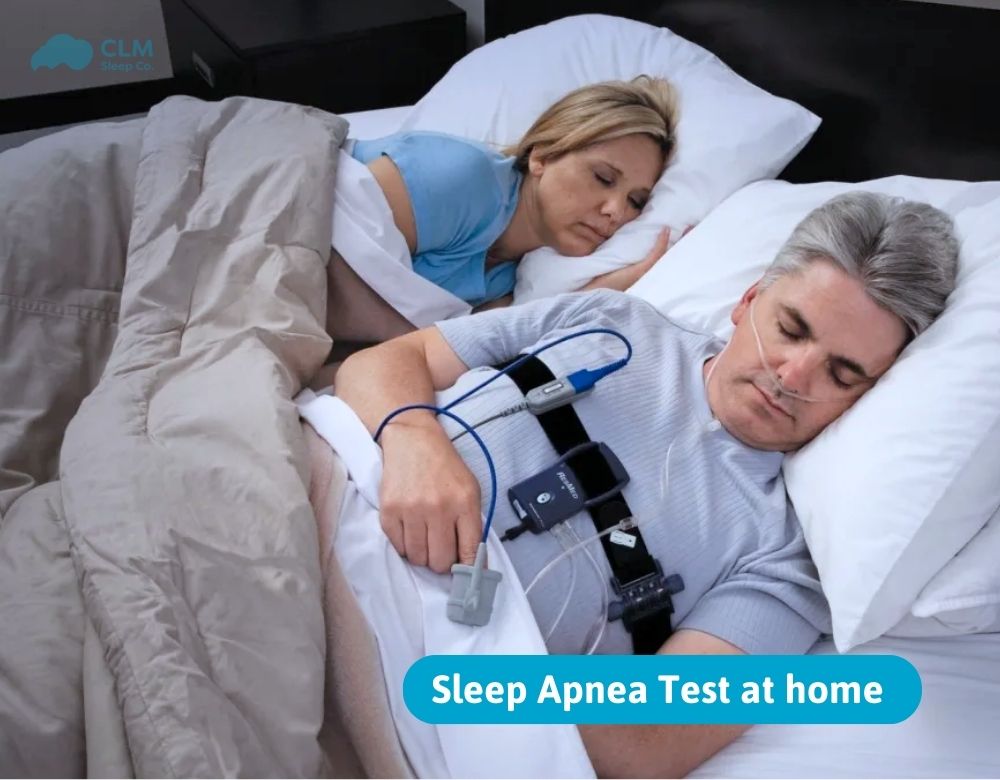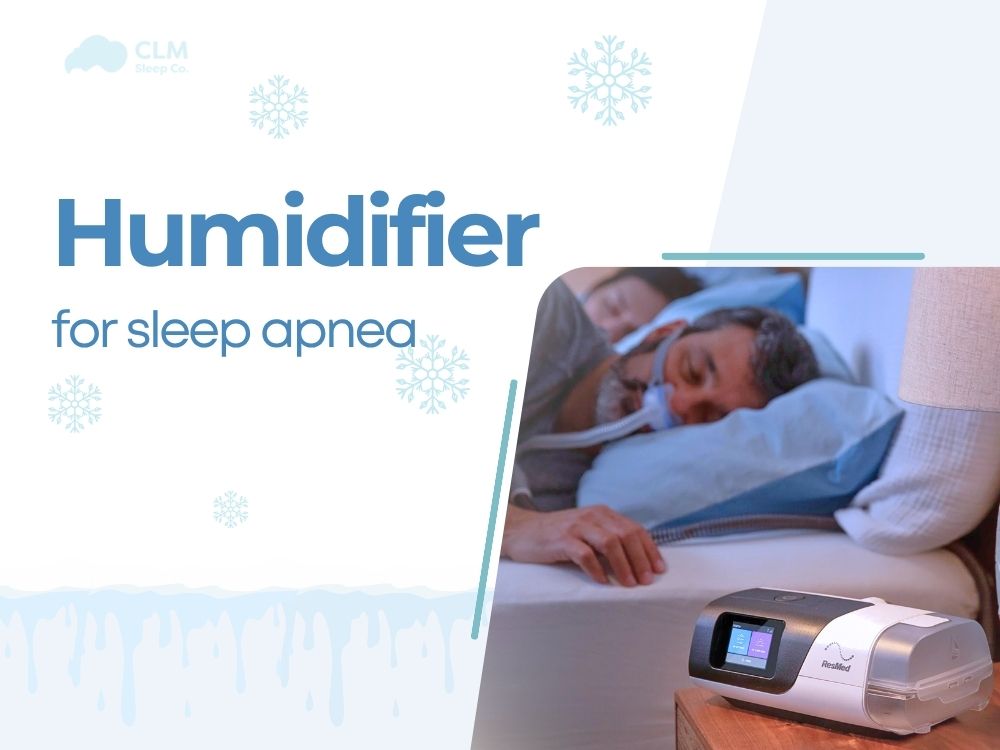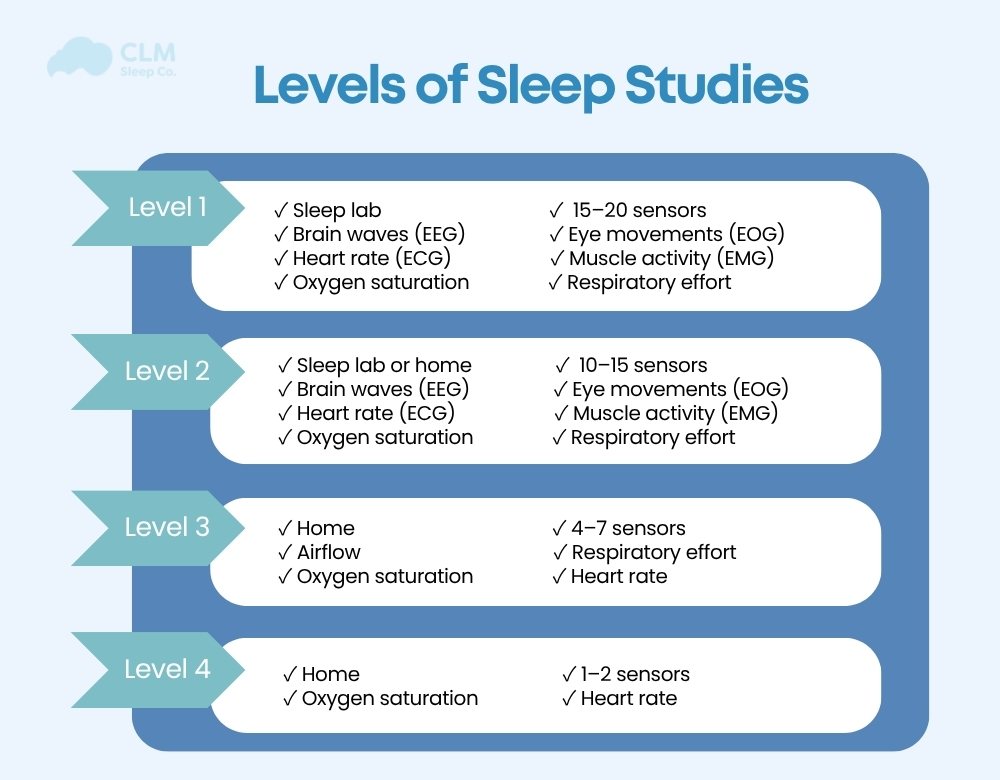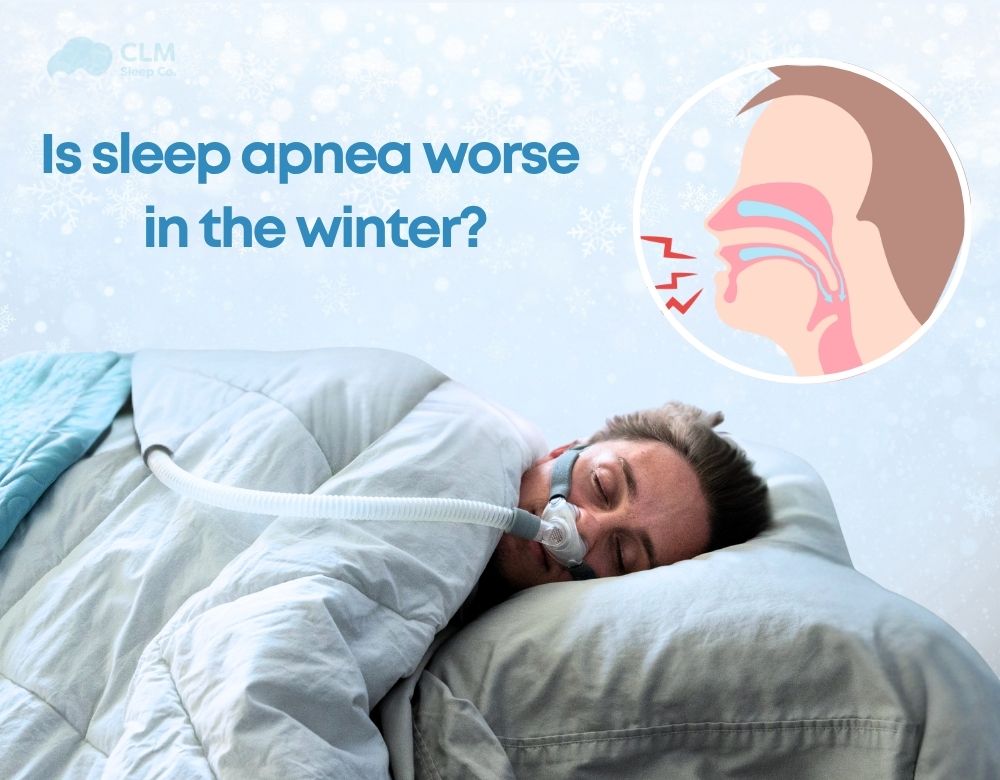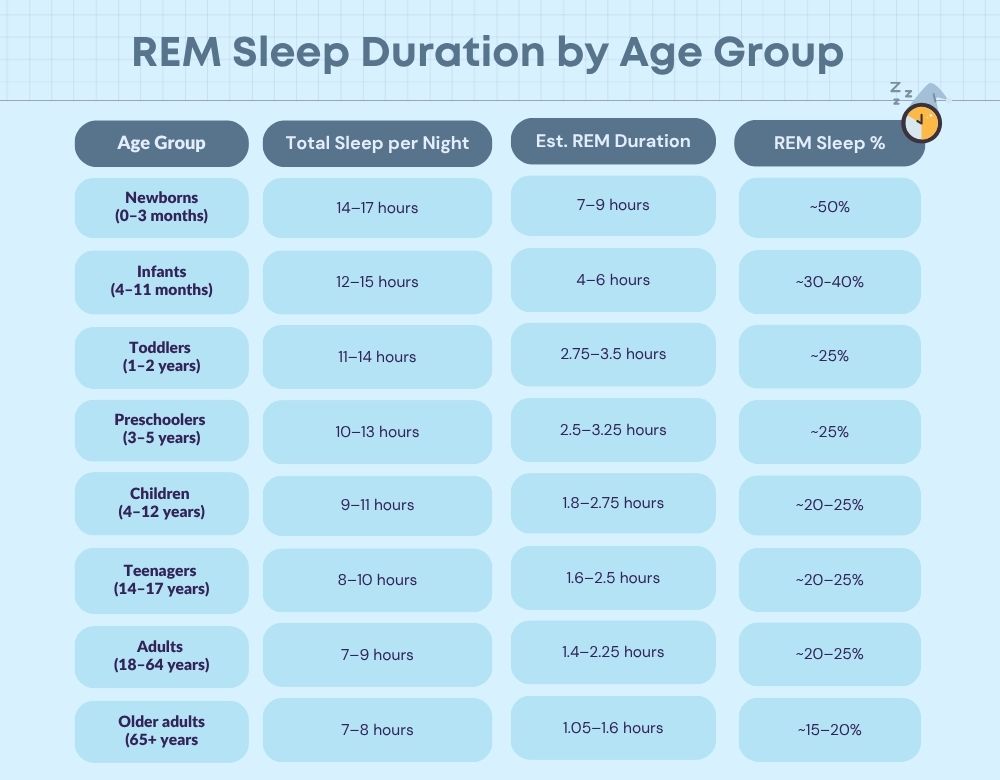Do you have symptoms like loud snoring, waking up multiple times during the night, or feeling tired when you wake up? Don’t overlook these symptoms, as they could be signs of sleep apnea. With a home Sleep Apnea Test, you can easily and comfortably check your health right in your familiar surroundings. Let’s learn to CLM Sleep how to conduct a sleep apnea test at home. Saving you time and money while still identifying your sleep problems.
What is a Sleep Apnea Test at Home?
Definition of HSAT (Home Sleep Apnea Test)
A Sleep Apnea Test at Home, also known as a Home Sleep Apnea Test (HSAT), is a simple and convenient medical examination that allows people to be tested for sleep apnea in the comfort of their own home by monitoring breathing rate, oxygen levels, respiratory effort, chest and abdominal movements, and the Apnea-Hypopnea Index (AHI). Instead of spending a night in a sleep clinic, the test uses portable monitoring devices to record important data related to breathing and oxygen levels during sleep. HSAT is designed to be easy to use and less intrusive than traditional in-lab sleep studies, making it a convenient option for many patients.
Home Sleep Apnea Test (HSAT) includes two types: Level 3 Sleep Study and Level 4 Sleep Study, which differ in the number of channels recorded and the level of diagnostic accuracy.
- Level 3 Sleep Study will measure more channels, from 4-7 channels, thereby providing more accurate predictions and can be used to diagnose sleep apnea or other sleep disorders.
- Level 4 Sleep Study only measures 1-2 channels, so the results of this study are not highly accurate and are usually used for screening rather than diagnosing diseases.
Why is HSAT Popular?
There are several reasons why home sleep apnea testing has become increasingly popular:
- Comfort: People can sleep in their own beds, which often results in more natural sleep.
- Convenience: No need to schedule a night at a sleep lab or travel far.
- Cost-effective: Generally less expensive than in-lab polysomnography.
- Accessibility: Makes sleep apnea diagnosis more available to people living in rural areas or those with mobility challenges.
Differences Between Level 3 and Level 4 Sleep Studies
HSAT devices come in different types, mainly classified as Level 3 and Level 4 sleep studies. Here’s a straightforward comparison:
| Feature | Level 3 Sleep Study | Level 4 Sleep Study |
| Number of signals recorded | Multiple (4-7 channels) including airflow, oxygen levels, heart rate, respiratory effort | Limited (1-2 channels), usually just oxygen saturation and pulse |
| Accuracy | High accuracy, can reliably diagnose sleep apnea | Less accurate, mainly used for initial screening |
| Data collected | Detailed physiological data to assess breathing and sleep disruptions | Basic oxygen levels and heart rate monitoring |
| Purpose | Diagnosis of sleep apnea | Screening for potential issues; further testing often required |
For most people undergoing testing at home, Level 3 Sleep Study is the preferred and recommended method because it provides comprehensive data needed for accurate diagnosis.
What a Sleep Apnea Test at Home Involves?
A home sleep apnea test (HSAT) is a simple way to assess whether you have sleep apnea. Sleep apnea is a condition in which breathing is stopped for a brief amount of time, lasting about 20 seconds or even up to several minutes. These tests are simpler and more accessible than in-lab sleep studies (polysomnography). And typically measure key indicators like airflow, breathing effort, blood oxygen levels, and heart rate. The method of home sleep apnea testing involves
Prescription from the sleep therapists
A sleep apnea test at home is a prescribed test. Therefore, if you feel tired or sleepy during the day even after getting enough sleep, or if you have other sleep-related disorders. Instead of testing your sleep at home, you should see a sleep therapists and acquire a sleep test prescription.
At-Home Sleep Apnea Testing Devices
The most common devices for home sleep apnea testing are mobile monitors. These devices are compact, lightweight, and designed for patients to easily use at home, including sensors to wear overnight while you sleep. These sensors can be attached to your finger (pulse oximeter), nose (nasal cannula), or chest.
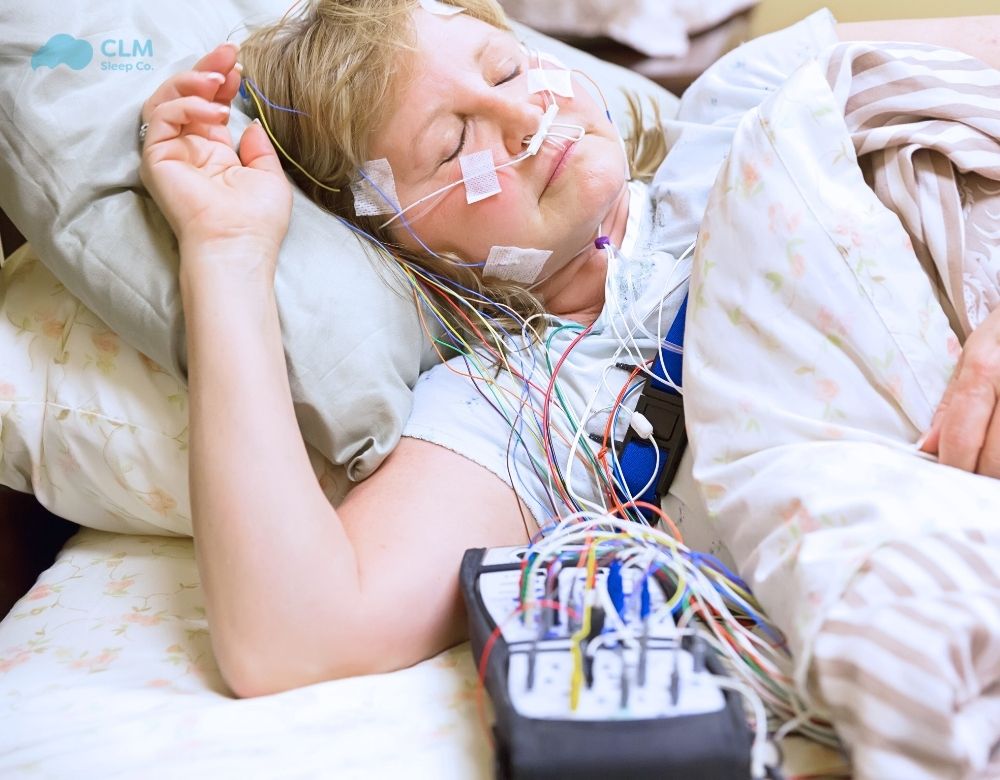
See more: Sleep study wire up
Measurements in a Home Sleep Apnea Test
The test will monitor airflow, oxygen saturation, heart rate, breathing patterns, and a few other parameters. These indicators will be measured based on the following:
Airflow is the rate and volume of air moving in and out of the nose and mouth.
Oxygen Saturation (SpO2) is the quantity of oxygen transported by red blood cells in the bloodstream, expressed as a percentage.
Heart rate is the number of beats per minute.
Breathing pattern is determined by the rhythm and consistency of breathing when sleeping, as well as the frequency and regularity of breaths.
Respiratory effort is the amount of work that the body puts in to maintain airflow.
Apnea-Hypopnea Index (AHI) is the average number of apneas (full pauses in breathing) and hypopneas (partial reductions in breathing) per hour of sleep.
Snoring intensity and frequency are represented by the volume and frequency with which the snoring sound occurs.
Chest and Abdominal Movement: The movement of the chest and abdomen when breathing. To distinguish between obstructive apnea (where effort is present but airflow is obstructed) and central apnea (where effort is absent owing to an issue with brain signals).
Setup for testing
Usually, you will set up the devices according to the instructions, which may include inserting sensors on specific body areas such as the fingertips, nose, and chest. And turn on the machine before going to bed.
Duration of implementation
The test is typically performed over one night, however some sleep therapists may require numerous nights for more complete data.
Results
After the examination, you return the gadget to your healthcare provider and meet with the person who examines the results. The sleep study results will help you identify if you have sleep apnea and how severe it is.
Who Should Consider an At-Home Sleep Apnea Test?
The subjects who should consider undergoing home sleep apnea testing are:
Individuals showing signs of sleep apnea from moderate to severe levels, including loud snoring, choking, or gasping for air during sleep, feel excessively tired during the day and experience headaches in the morning. Those who do not easily have access to a sleep lab or have difficulty sleeping in a laboratory environment.
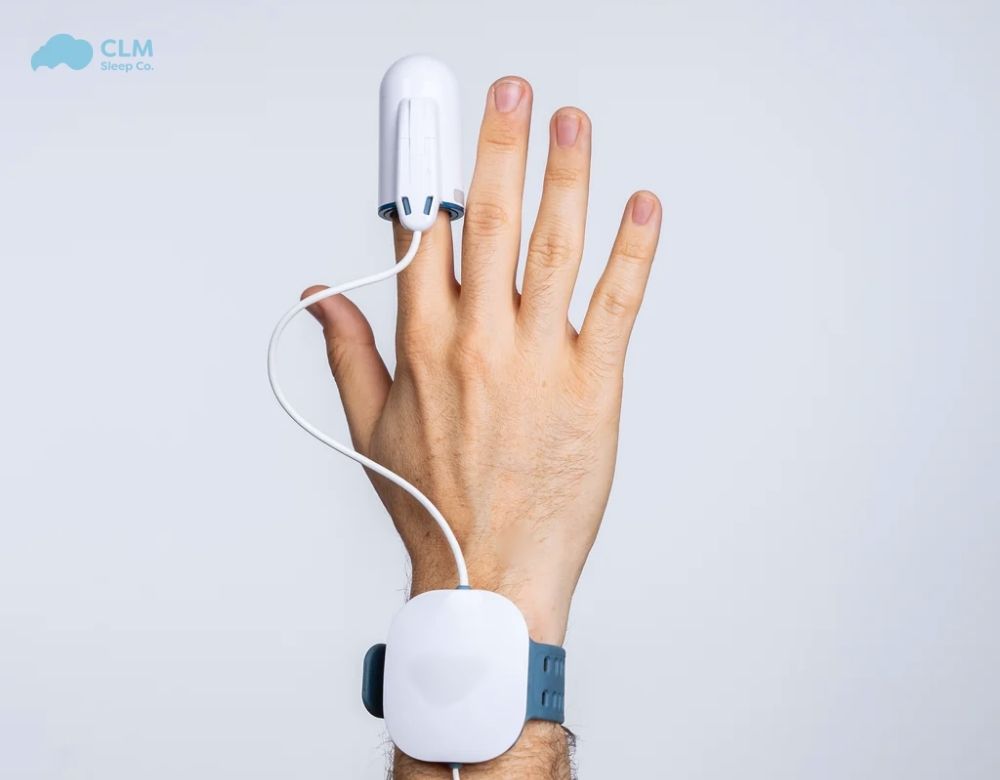
Limitations of Sleep Apnea Test at home
This testing may not be suitable for people with complex sleep disorders, severe heart and lung disorders, or other medical considerations.
At-Home Sleep Apnea Testing is less comprehensive than in-lab studies. Because they do not include all of the physiological data that polysomnography does.
However, the Sleep Apnea Test at home, specifically the Level 3 Sleep Study, is still commonly used to diagnose sleep apnea due to its convenience.
Note: The Home Sleep Apnea Test includes both Level 3 and Level 4 Sleep Studies; however, in practice, it is often understood as a Level 3 Sleep Study due to its higher accuracy. Therefore, when choosing a home sleep test method, you should carefully check whether it is a Level 3 or Level 4 type to achieve the desired evaluation results.
The Facts About sleep apnea test at home
They track respiration, not actual sleep
A sleep test is designed to evaluate a patient for sleep apnea by monitoring respiratory characteristics rather than sleep itself. For example, the sleep test will not tell you how long you’ve been in light or deep sleep. Instead, it will track pauses in and absence of breathing, the amount of effort required to breathe, and whether your breathing is deep or shallow.
At-home sleep apnea testing equipment is primarily rented rather than purchased
Home sleep monitoring devices are usually used one-time or occasionally rather than for continuous or daily tracking. The cost of purchasing this equipment is high and may not be practical for most people. When prescribed by a certified sleep coach, you can rent a sleep apnea testing device at the place recommended by your certified sleep coach or sleep specialist. Or at sleep clinics and medical facilities.
Sleep apnea test cost
The cost of a sleep apnea test varies based on the type of test and where it is performed.
Home Sleep Apnea Test (HSAT): This is a more straightforward and convenient test that may be performed at home. The cost normally ranges between $150 and $500. It is typically less expensive because it employs portable equipment and requires less supervision.
In-Lab Polysomnography: A more extensive test performed in a sleep clinic or hospital. It requires overnight monitoring by healthcare personnel, which raises the cost. The cost often ranges between $1,000 and $3,000 or more, depending on the location, facility, and complexity of the test.
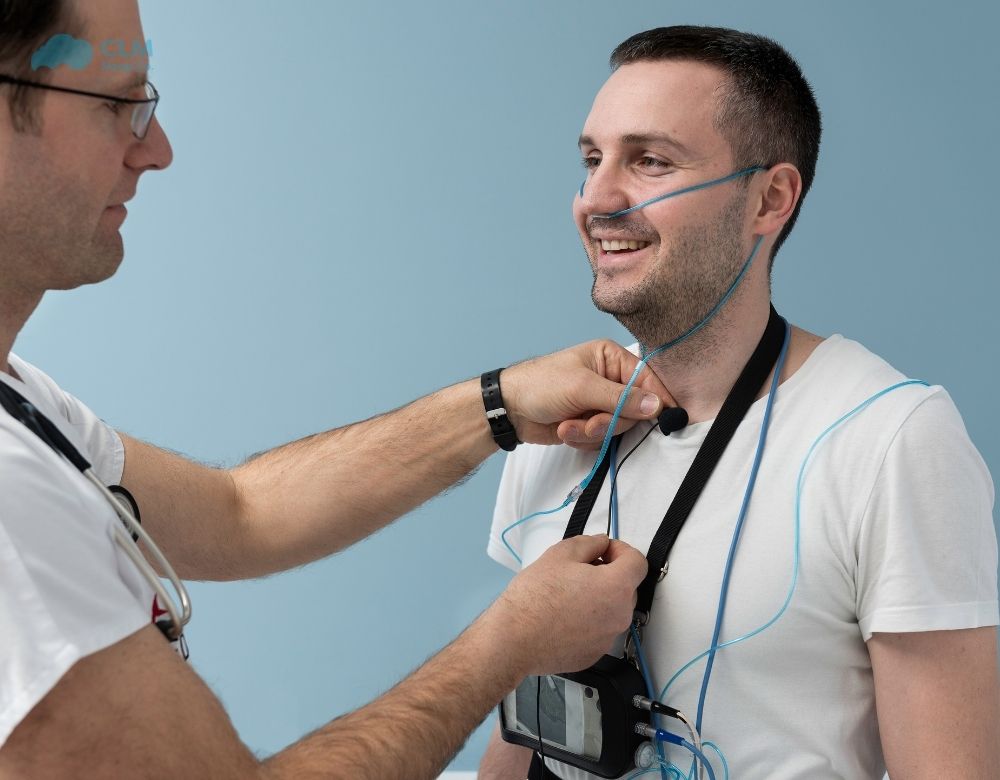
Note: Many insurance companies, including Medicare, will cover sleep apnea tests if they are judged medically necessary. However, coverage varies, so consult with your insurance provider to determine what portion of the cost may be covered.
CLM Sleep – Sleep study, diagnosis and treatment of sleep disorders
CLM Sleep, with over 50 stores spread across Australia, especially in Adelaide and Victoria. We offer various forms of sleep studies catered to your needs and suitability for the diagnosis of Obstructive Sleep Apnoea and other sleep disorders.
- Home Sleep Studies
- Laboratory Sleep Studies
- MSLT
- Driving Simulator
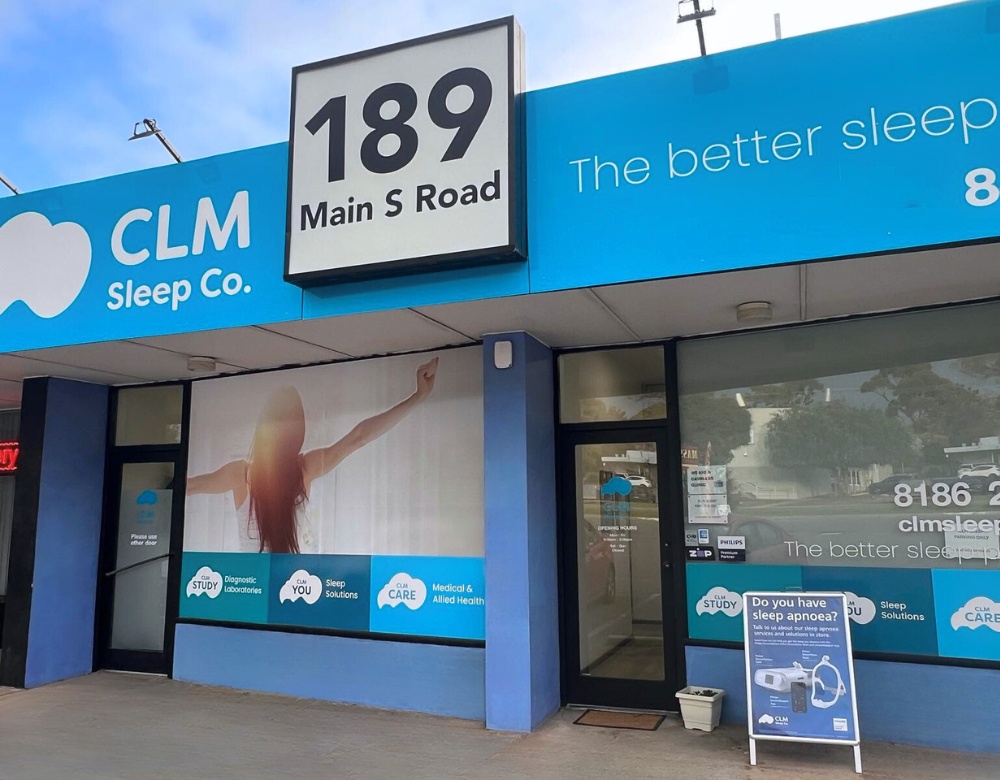
And we aim for a treatment program that provides long-lasting results. The treatment methods for sleep apnea available at the CLM Sleep clinic system include:
- CPAP Programme
- 360° Sleep Programme
- Sleep Coaching Programme
- Diet & Weight Management Programme
- RECLAIMsleep Programme
- Sleep Dental Programme
- Sleep Positional Therapy
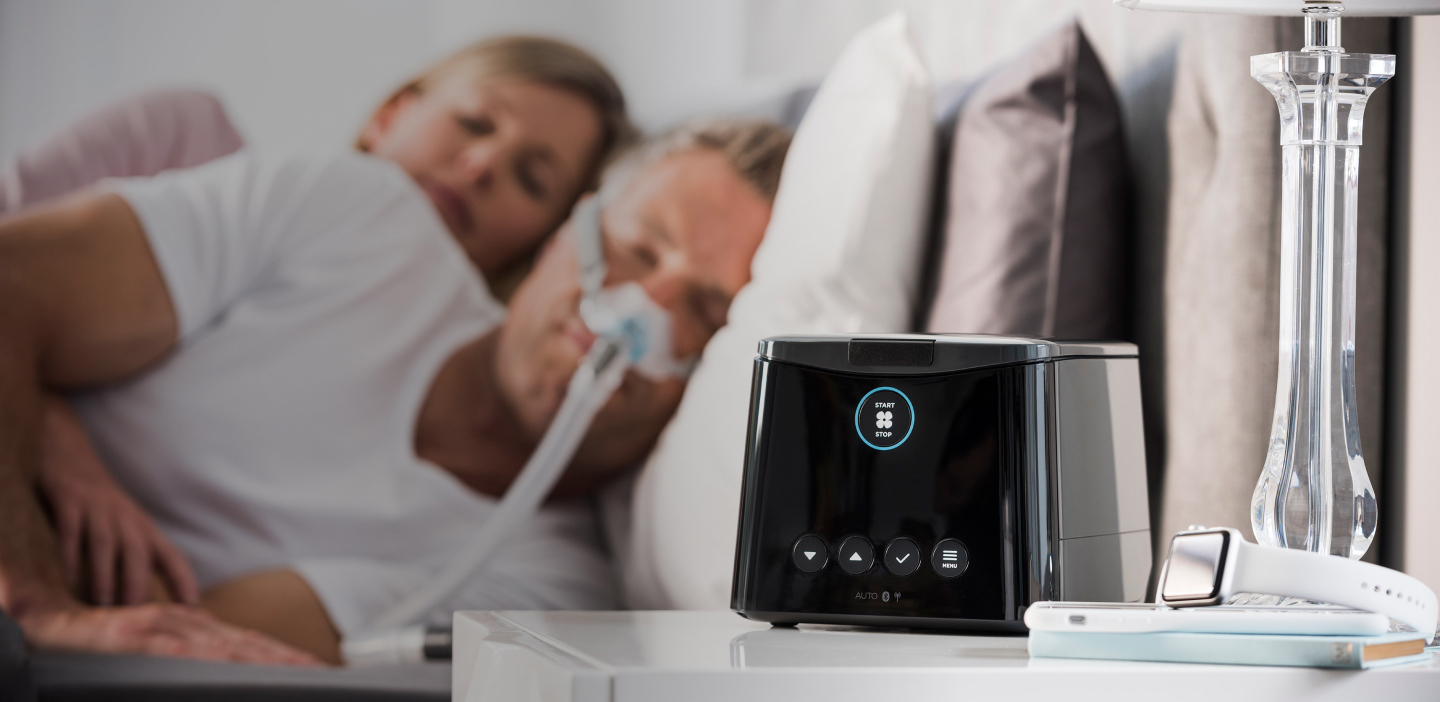
Find the best CPAP machine for you
Shop CPAP Discount Warehouse to buy affordable sleep apnea products, including CPAP masks, CPAP machines, accessories and supplies
Conclusion
If you feel you have sleep apnea, don’t hesitate to consult a healthcare expert and schedule a home test. You can also call CLM Sleep on 1300 256 753 to find the nearest available room in Australia. Proactively monitoring and tracking sleep apnea at home will help you quickly identify and address potential health issues, thereby improving your quality of life and sleep each day. Consider this option if you are looking for a convenient and effective solution!
